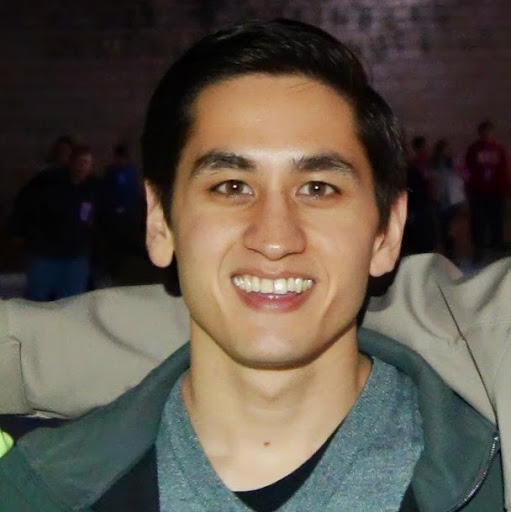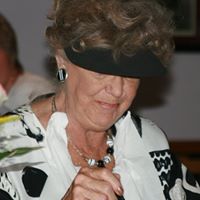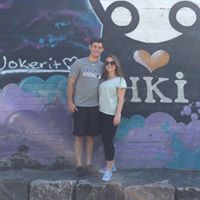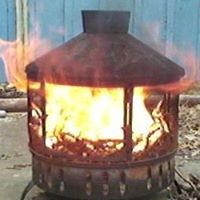Douglas Edward Rogers
age ~65
from San Rafael, CA
- Also known as:
-
- Douglas E Rogers
- Douglase Rogers
- Phone and address:
-
13 Shores Ct, San Rafael, CA 94903
4153788541
Douglas Rogers Phones & Addresses
- 13 Shores Ct, San Rafael, CA 94903 • 4153788541
- Montgomery, AL
- San Anselmo, CA
- Marina, CA
- 13 Shores Ct, San Rafael, CA 94903
Work
-
Position:Professional/Technical
Education
-
Degree:High school graduate or higher
Medicine Doctors

Douglas G. Rogers
view sourceSpecialties:
Pediatric Endocrinology, Diabetes
Work:
Cleveland Clinic
9500 Euclid Ave, Cleveland, OH 44195
8002232273 (phone), 2164450127 (fax)
Cleveland ClinicCleveland Clinic Endocrinology
9500 Euclid Ave, Cleveland, OH 44195
2164445515 (phone), 2166366761 (fax)
9500 Euclid Ave, Cleveland, OH 44195
8002232273 (phone), 2164450127 (fax)
Cleveland ClinicCleveland Clinic Endocrinology
9500 Euclid Ave, Cleveland, OH 44195
2164445515 (phone), 2166366761 (fax)
Education:
Medical School
Rosalind Franklin University/ Chicago Medical School
Graduated: 1978
Rosalind Franklin University/ Chicago Medical School
Graduated: 1978
Conditions:
Diabetes Mellitus (DM)
Hyperthyroidism
Hypothyroidism
Metabolic Syndrome
Non-Toxic Goiter
Hyperthyroidism
Hypothyroidism
Metabolic Syndrome
Non-Toxic Goiter
Languages:
English
Spanish
Spanish
Description:
Dr. Rogers graduated from the Rosalind Franklin University/ Chicago Medical School in 1978. He works in Cleveland, OH and 1 other location and specializes in Pediatric Endocrinology and Diabetes. Dr. Rogers is affiliated with Cleveland Clinic.

Douglas A. Rogers
view sourceSpecialties:
Family Medicine
Work:
Ocala Family Medical CenterOcallaghan Family Medical Center
2230 SW 19 Ave Rd, Ocala, FL 34471
3522374133 (phone), 3528734581 (fax)
2230 SW 19 Ave Rd, Ocala, FL 34471
3522374133 (phone), 3528734581 (fax)
Education:
Medical School
University of New England College of Osteopathic Medicine
Graduated: 1991
University of New England College of Osteopathic Medicine
Graduated: 1991
Conditions:
Acute Bronchitis
Acute Sinusitis
Acute Upper Respiratory Tract Infections
Allergic Rhinitis
Anxiety Dissociative and Somatoform Disorders
Acute Sinusitis
Acute Upper Respiratory Tract Infections
Allergic Rhinitis
Anxiety Dissociative and Somatoform Disorders
Languages:
English
Spanish
Spanish
Description:
Dr. Rogers graduated from the University of New England College of Osteopathic Medicine in 1991. He works in Ocala, FL and specializes in Family Medicine. Dr. Rogers is affiliated with Munroe HMA Hospital LLC and Ocallaghan Regional Medical Center.
Isbn (Books And Publications)

Sherwood Anderson: A Selective, Annotated Bibliography
view sourceAuthor
Douglas G. Rogers
ISBN #
0810809001

Us Patents
-
Creating Texture Data Outside Of A Chart Boundary
view source -
US Patent:7605820, Oct 20, 2009
-
Filed:Sep 15, 2005
-
Appl. No.:11/227551
-
Inventors:Douglas H. Rogers - Gilroy CA, US
Kevin Bjorke - Santa Clara CA, US -
Assignee:NVIDIA Corporation - Santa Clara CA
-
International Classification:G09G 5/00
G06T 17/20
G06T 17/00 -
US Classification:345582, 345419, 345420, 345421, 345423, 345619, 345621, 345623
-
Abstract:Discontinuities along texture mapped seams of three-dimensional models may be reduced by creating and sampling texture data outside of chart boundaries. When a texel center is not within a chart boundary (a group of connected triangles in texture space) a phantom face is generated that includes the texel center. Phantom texture coordinates are created for each texel center that is covered by the phantom face. The phantom texture coordinates are used to read a texture sample from another chart in texture space that is adjacent to the chart boundary in model space, producing a smooth transition across the seam.
-
Two Component Texture Map Compression
view source -
US Patent:7961195, Jun 14, 2011
-
Filed:Nov 16, 2004
-
Appl. No.:10/990900
-
Inventors:Douglas H. Rogers - Gilroy CA, US
Gary C. King - San Jose CA, US
Walter E. Donovan - Saratoga CA, US -
Assignee:Nvidia Corporation - Santa Clara CA
-
International Classification:G06T 9/00
G06F 15/00
G06T 1/00 -
US Classification:345555, 345501
-
Abstract:Methods and systems for compressing and decompressing data are described. A first value of N+1 bits and a second value of N+1 bits are reduced to strings of N bits each. The first and second strings of N bits are stored in a particular order relative to one another in a compression block. The particular order in which the first and second strings of N bits are stored in the compression block is used to derive a bit value that is then used in combination with one of the strings of N bits to reconstruct that string as N+1 bits.
-
Data Decompression With Extra Precision
view source -
US Patent:8078656, Dec 13, 2011
-
Filed:Nov 16, 2004
-
Appl. No.:10/990884
-
Inventors:Douglas H. Rogers - Gilroy CA, US
Gary C. King - San Jose CA, US
Walter E. Donovan - Saratoga CA, US -
Assignee:NVIDIA Corporation - Santa Clara CA
-
International Classification:G06F 15/00
-
US Classification:708200
-
Abstract:Methods and systems for decompressing data are described. The relative magnitudes of a first value and a second value are compared. The first value and the second value represent respective endpoints of a range of values. The first value and the second value each have N bits of precision. Either the first or second value is selected, based on the result of the comparison. The selected value is scaled to produce a third value having N+1 bits of precision. A specified bit value is appended as the least significant bit of the other (non-selected) value to produce a fourth value having N+1 bits of precision.
-
High-Compression Texture Mapping
view source -
US Patent:8542243, Sep 24, 2013
-
Filed:Nov 19, 2010
-
Appl. No.:12/950019
-
Inventors:Douglas H. Rogers - Gilroy CA, US
-
International Classification:G09G 5/00
-
US Classification:345582, 345423, 345552, 345555, 382232
-
Abstract:Embodiments provide texture compression with high compression ratios and low decompression times. Some embodiments partition a texture map into texel blocks. The number of blocks is reduced until a compression threshold is reached, and the resulting blocks are stored as a codebook. An index array is generated by associating each texel block with an index and associating each index with the block in the codebook identified as a closest match to the associated texel block. The codebook may then be compressed according to a technique compatible with a GPU. In certain embodiments, to render a scene, a CPU “inflates” the texture map by copying the appropriate codebook block to each indexed block location of the texture map, as defined by the index array. Because the codebook blocks are already compressed in a format compatible with the GPU, the inflated texture map is also compatible with the GPU without further processing.
-
Data Decompression With Extra Precision
view source -
US Patent:20120084334, Apr 5, 2012
-
Filed:Dec 13, 2011
-
Appl. No.:13/324971
-
Inventors:Douglas H. Rogers - Gilroy CA, US
Gary C. King - San Jose CA, US
Walter E. Donovan - Saratoga CA, US -
Assignee:NVIDIA CORPORATION - Santa Clara CA
-
International Classification:G06F 17/10
-
US Classification:708203
-
Abstract:Methods and systems for decompressing data are described. The relative magnitudes of a first value and a second value are compared. The first value and the second value represent respective endpoints of a range of values. The first value and the second value each have N bits of precision. Either the first or second value is selected, based on the result of the comparison. The selected value is scaled to produce a third value having N+1 bits of precision. A specified bit value is appended as the least significant bit of the other (non-selected) value to produce a fourth value having N+1 bits of precision.
-
Hierarchical Continuous Level Of Detail For Three-Dimentional Meshes
view source -
US Patent:20170091992, Mar 30, 2017
-
Filed:Jan 5, 2016
-
Appl. No.:14/988480
-
Inventors:Douglas Rogers - Gilroy CA, US
-
International Classification:G06T 17/00
G06T 17/20 -
Abstract:Embodiments use hierarchical continuous level of detail (H-CLOD) trees with inherited splitting plane partitioning to reduce visual artifacts in renderings. For example, a three-dimensional mesh can be iteratively split, according to iteratively defined splitting planes, until sub-meshes are smaller than a predetermined bucket size. Each splitting can define a hierarchical level of a tree, so that the original mesh is a root node, each split sub-mesh is a child node, and the smallest meshes are leaf nodes. An H-CLOD tree can be generated by simplifying and combining each group of sibling node sub-meshes bottom-up into a simplified parent mesh accounting for inherited splitting planes, so that the tree has a most simplified mesh as its root node and a most un-simplified mesh formed by a combination of its leaf nodes. At render time, traversing the H-CLOD tree can produce a desired level of detail from the pre-computed nodes.
Name / Title
Company / Classification
Phones & Addresses
CTO
Belvedere Group LLC
Investment Advice
Investment Advice
55 Main St, Tiburon, CA 94920
CTO
Belvedere Group, LLC
Investment Manager · Business Services · Investment Advice
Investment Manager · Business Services · Investment Advice
120 Main St, Tiburon, CA 94920
55 Main St, Belvedere Tiburon, CA 94920
4154355433
55 Main St, Belvedere Tiburon, CA 94920
4154355433
Director, Treasurer
The George Ball Charity Association of Galveston, Texas
DIGITAL VECTOR STUDIOS LIMITED
BUCK R DESIGNS, INC
DCR INVESTMENTS LLC
JFOUR CO., LTD
ACCREDITED MORTGAGE SERVICE CORP
License Records
Douglas A. Rogers
Phone:
8592231867 (Work)
License #:
02375 - Expired
Category:
Family Medicine
Type:
Private Practice
Douglas H Rogers
License #:
RS131517A - Expired
Category:
Real Estate Commission
Type:
Real Estate Salesperson-Standard
Lawyers & Attorneys

Douglas S. Rogers - Lawyer
view sourceLicenses:
New York - Currently registered 1982
Education:
Syracuse University College of Law

Douglas L Rogers - Lawyer
view sourceAddress:
6143954686 (Office)
Licenses:
Dist. of Columbia - Active 1978
Googleplus

Douglas Rogers
Work:
The Art Institute of Tampa - Instructor of Media Arts and Animation (8)
SOE Software - Creative Director (3)
SOE Software - Creative Director (3)
Education:
Rochester Institute of Technology - Computer Animation
Tagline:
A month of an animator's life goes by in 30 seconds.

Douglas Rogers
Education:
Iowa State University - Management Information Systems
Relationship:
Single

Douglas Rogers
Education:
Boston College High School, Stevens Institute of Technology
About:
Quit my job blowin' leaves. Telephone bills up my sleeves.

Douglas Rogers
Education:
University of Pittsburgh

Douglas Rogers
Work:
US Department of Veterans Affairs - Public Affairs Officer

Douglas Rogers

Douglas Rogers

Douglas Rogers
Flickr
Youtube
Myspace
Plaxo

DOUGLAS ROGERS
view sourceBurbank, CAProduction Designer at Disney Animation

Douglas Rogers
view sourceDirector Of Operations at Peregrine Development In...

Douglas Rogers
view sourcePresident at Mr Appliance

Lila Douglas Rogers
view source
Ian Douglas Rogers
view source
Douglas Rogers
view source
Christopher Douglas Rogers
view source
Douglas Rogers
view source
Douglas Bennett Rogers
view source
Douglas Rogers
view source
Douglas Rogers
view sourceClassmates

Douglas Lott (Rogers)
view sourceSchools:
Bustoz Elementary School Tempe AZ 1974-1976, Connolly Middle School Tempe AZ 1976-1978
Community:
Clifford Richardson, Rick Cornell, James Engols
Biography:
Life
Moved to LA in 1988 then to Milwaukee in 1992. Working as an Accountant/Financ...

Douglas Rogers
view sourceSchools:
Starr's Mill High School Fayetteville GA 1998-2002
Community:
Jennifer Dye, Melanie Ballard, Miranda Ray

Douglas Rogers
view sourceSchools:
Fredericksburg Middle School Fredericksburg VA 1958-1962
Community:
Terrence Taylor, Claude Crockett, Margaret Howard, Tanya Nagyiski, Grace Washington

Douglas Rogers
view sourceSchools:
Georgia Technical School Atlanta GA 1971-1976
Community:
Robert Holtsford, Luke Haag, Doug Tidwell

Douglas Rogers
view sourceSchools:
Delaware Valley High School Milford PA 1972-1976
Community:
Jane Barber, Georgette Harms, Fred Biscardi

Douglas Rogers
view sourceSchools:
Maplewood High School Greeley CO 1962-1966
Community:
Terrie Mcmanaman

Douglas Rogers
view sourceSchools:
Boys Trade & Tech High School Milwaukee WI 1955-1959
Community:
Timothy Helbling, Clarence Dep, Paul Brandt

Douglas Rogers
view sourceSchools:
Sweetwater High School Sweetwater TN 1972-1976
Community:
Johnnie Gallant, Charles Ray
Get Report for Douglas Edward Rogers from San Rafael, CA, age ~65


















